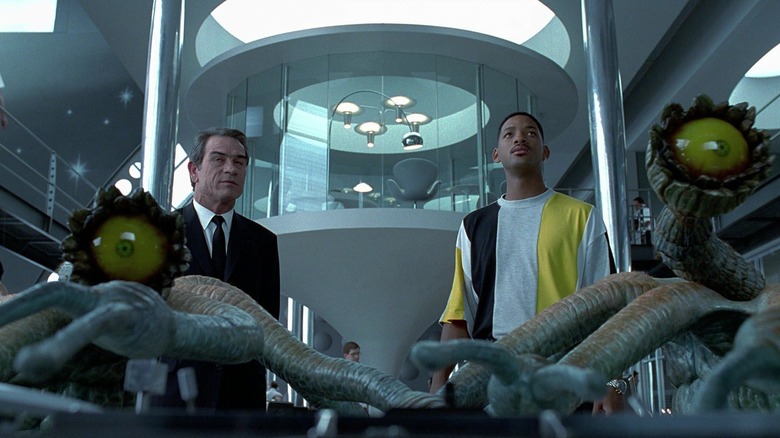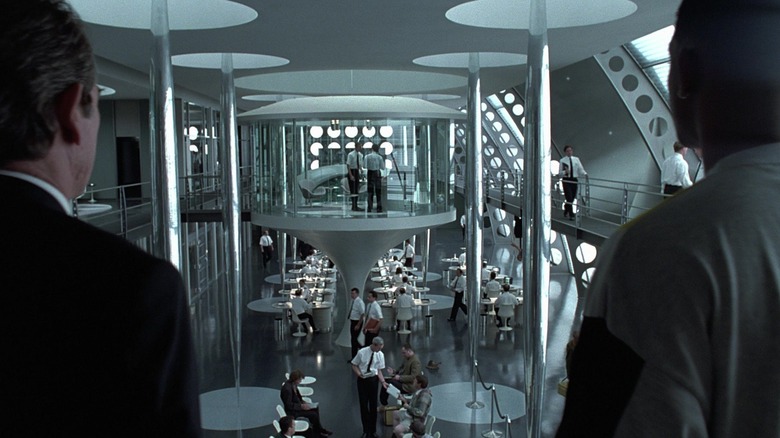The Toxic Reason The Men In Black Headquarters Set Could Never Be Built Again
Barry Sonnenfeld's sci-fi comedy "Men in Black" was one of the more notable blockbusters of the 1990s. The film's screenplay was extrapolated from real-life urban myths about mysterious men in back suits (MIBs) who would visit people who had allegedly been abducted by aliens. MIBs had already appeared in "The X-Files," and their legend was passed around ufology circles for years. Sonnenfeld's "Men in Black" imagined the lives of MIBs as, essentially, sci-fi immigration officials, charged with policing the extraterrestrials living on Earth. Because the existence of aliens on Earth would cause a public panic, the Men in Black operate entirely in secret. They're equipped with memory-erasing devices they can use on any witnesses, and none of them use their original names. The two main characters of "Men in Black" are agents J (Will Smith) and K (Tommy Lee Jones).
The Men in Black operate out of a massive airport-like headquarters building that's always bustling with extraterrestrial activity. Human and aliens work together to protect the wellbeing and interests of all alien immigrants, while also engaging in a large-scale technology exchange — meaning the Men in Black have alien cars and guns at their disposal.
The production designer on "Men in Black" was Bo Welch, best known for his work on several Tim Burton movies. Welch discussed his amazing sets for "Men in Black" (which earned an Academy Award nomination) in a 2022 oral history for Inverse, where he discussed his inspiration for his Headquarters designs, as well as the unfortunately toxic materials he used to build it.
The chrome in Men in Black turned out to be toxic
Bo Welch said that he liked the idea of Men in Black Headquarters looking like a 1960s-era airport terminal: a huge, long building full of steel walkways and shiny columns. Specifically, he emulated the architect Eero Saarinen, known for designing a terminal at JFK.
Thomas Duffield, the film's art director, helped construct the columns themselves, building them out of fiberglass. Duffield said that Welch was fond of how ridiculous the columns looked. As one can see from the above photo, the columns bulged outward in the middle, and came to tiny points at the top and bottom. It gave them a fun, retro-futurist look, but it's clear that they wouldn't be able to hold up a building. They were then painted with chrome and polished to a shine.
The silver chrome paint, though, was not a healthy substance to breathe in. Welch admitted as much, saying:
"[The columns] were probably 35 feet tall. I wanted them to look like chrome. So we had brilliant sculptor-plasterers who spun that shape out of fiberglass and foam; coated them; but then the polished metal finish involved spraying some horribly toxic metallic material onto the body of that thing. And then grinding and buffing it to perfection."
Duffield added that "Since then, they said that technique is hazardous and no one can do it anymore." New, less toxic means now need to be used to create chrome on camera.
Sadly, Welch did not win the Oscar that year, perhaps predictably losing to "Titanic." It's a pity, as Welch has always done good work. Most recently, he served as the production designer on the second season of "Schmigadoon!" That show netted him an Emmy nomination.

